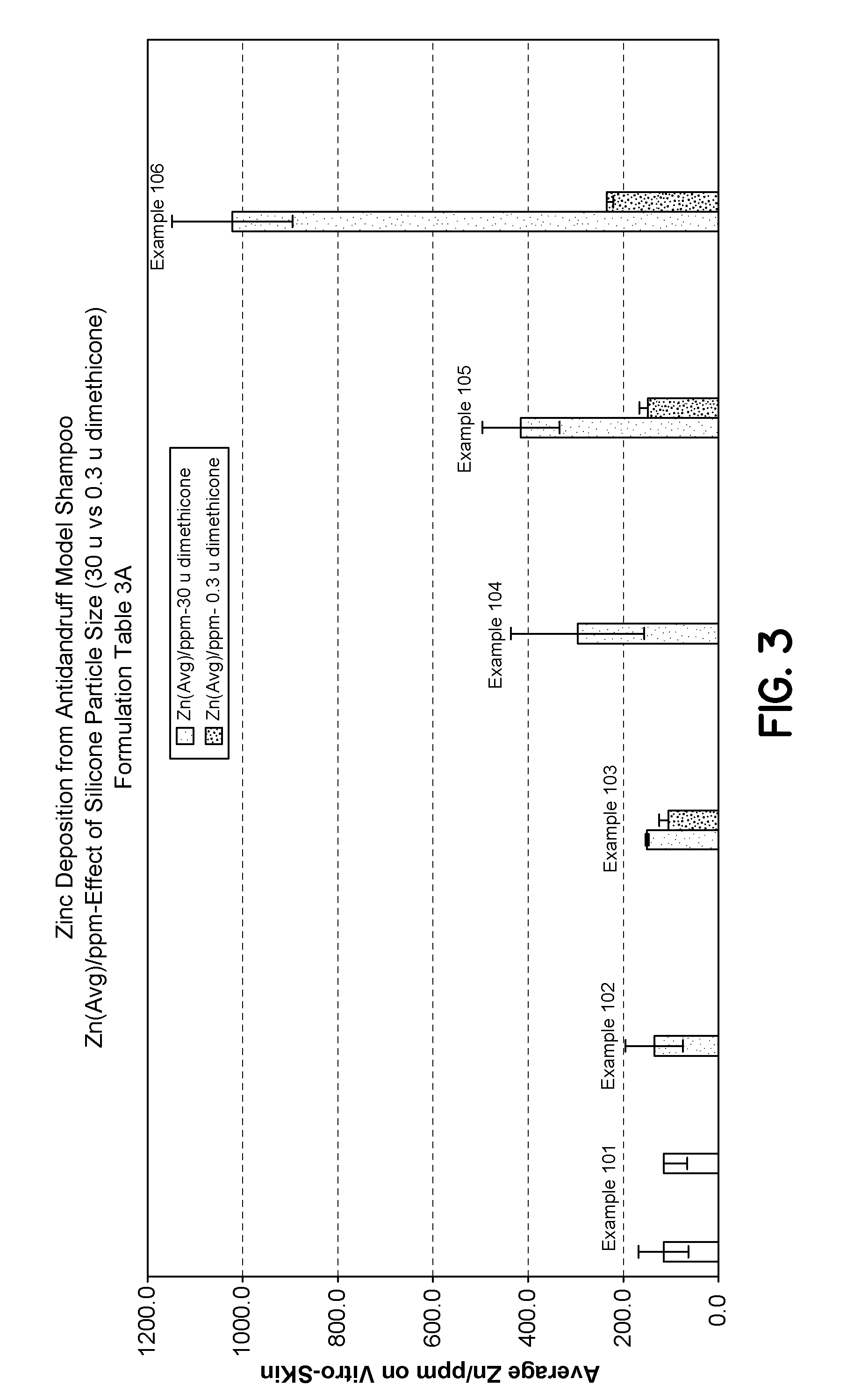Cationic synthetic polymers with improved solubility and performance in surfactant-based systems and use in personal care and household applications
a technology of surfactant-based formulations and synthetic polymers, which is applied in the direction of drug compositions, detergent compounding agents, hair cosmetics, etc., can solve the problems of reduced solubility, reduced clarity, and reduced deposition performance of surfactant-based formulations, so as to improve foaming and lather performance, improve conditioning performance, and improve the effect of dispersed phase deposition
- Summary
- Abstract
- Description
- Claims
- Application Information
AI Technical Summary
Benefits of technology
Problems solved by technology
Method used
Image
Examples
examples
[0103]In order to achieve improved aesthetic performance, including reduced stringiness, and improved deposition performance, a series of lower molecular weight cationic polyacrylamide polymers were prepared through adiabatic gel polymerization procedures as set forth in U.S. Pat. No. 7,375,173, previously incorporated herein by reference.
Method of Preparation of Blends
[0104]The following general method was used for preparation of the blend material in Examples 10, 11, and 12 in Table 1. This same method was used for preparation of all blend materials described in the Examples section.
[0105]The cationic guar polymers were used as received. The cation synthetic polyelectrolytes of the invention were milled through a Netzsch Condux CUM 150 Universal Mill configured with a 0.2 Micron Connidur screen and Blast Rotor operating at 8000 RPMs mill to yield a powder between (50-60 μm). The ground form of the cationic polyacrylamide had a reduced content of the residual acrylamide monomer (12...
examples 1-14
[0108]In a shampoo formulation containing 12% sodium lauryl ether sulfate / 2% cocamidopropyl betaine surfactant system blends, the shampoo formulations containing the high molecular weight, higher viscosity cationic acrylamide polymers, as shown in Examples 2-3 in Table 1, contained residual undissolved gels even after long dissolution times.
[0109]The solubility of the lower molecular weight cationic acrylamide polymer prepared by the adiabatic gel polymerization process was significantly improved as shown by the absence of gels and lack of haze (higher clarity) in the resulting shampoo formulation for the polymers of the invention in Examples 8 and 9. The polymers of the invention in Examples 8 and 9 show improved solubility and clarity in shampoo formulations, even when compared with lower MW cationic acrylamide polymers prepared by solvent polymerization (Example 5) or emulsion polymerization processes (Example 4).
[0110]It is important to note that the shampoo in Example 5 contain...
examples 15-19
[0116]The examples in Table 2 further demonstrate the improved shampoo clarity of the polymers of the invention. Polymers of the invention in Examples 18 and 19 show the best clarity, as demonstrated by % transmittance values >95% in three surfactant systems, with few to no gels. The comparative control polymer in Example 15 shows significant gels. The comparative control polymers in Examples 16 and 17 show significant gels, and reduced clarity as demonstrated by % transmittance values less than 90% in two of the three surfactant systems.
PUM
| Property | Measurement | Unit |
|---|---|---|
| Fraction | aaaaa | aaaaa |
| Fraction | aaaaa | aaaaa |
| Fraction | aaaaa | aaaaa |
Abstract
Description
Claims
Application Information
 Login to View More
Login to View More - R&D
- Intellectual Property
- Life Sciences
- Materials
- Tech Scout
- Unparalleled Data Quality
- Higher Quality Content
- 60% Fewer Hallucinations
Browse by: Latest US Patents, China's latest patents, Technical Efficacy Thesaurus, Application Domain, Technology Topic, Popular Technical Reports.
© 2025 PatSnap. All rights reserved.Legal|Privacy policy|Modern Slavery Act Transparency Statement|Sitemap|About US| Contact US: help@patsnap.com



